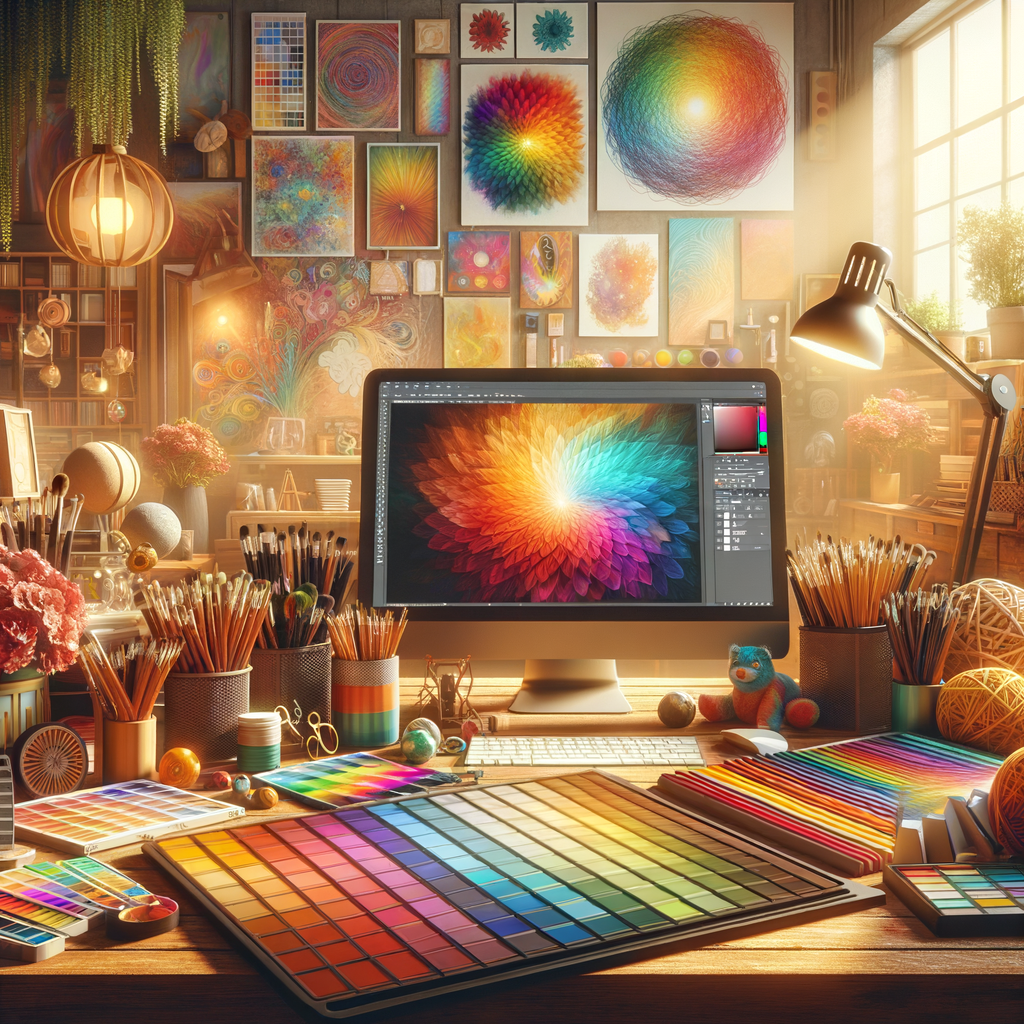
Color plays a crucial role in digital art, influencing mood, depth, and the overall effectiveness of your work. Understanding how to select and combine colors is essential for every artist, whether you're creating illustrations, concept art, or any form of digital painting. In this article, we will delve into the intricacies of color theory, provide guidelines on how to create a harmonious color palette, and share tips that can enhance your artistic endeavors.
Creating a successful color palette involves understanding some fundamental principles of color theory. The basic elements of color include hue, saturation, and value. Hue refers to the color itself (e.g., red, blue, yellow), saturation describes the intensity of the color (how vivid or muted it appears), and value indicates the lightness or darkness of the color. Mastering these components will elevate your ability to mix and apply colors effectively in your work.
One effective method to develop a beautiful color palette is to start with a color wheel. The color wheel is a visual representation of colors arranged according to their chromatic relationships. Primary colors (red, blue, yellow) combine to create secondary colors (green, orange, purple), which further blend to form tertiary colors.
Another key aspect of developing your palette is utilizing complementary colors. Complementary colors are located directly opposite each other on the color wheel. For example, the complement of red is green. Using these pairs in your artwork can create striking contrasts that draw the viewer's eye. Exploring complementary colors can be both fun and rewarding, as they can add depth and character to your compositions.
To create a harmonious color palette, you can consider employing concepts such as analogous colors. These are colors that sit next to each other on the color wheel, such as blue, blue-green, and green. Using analogous colors gives your artwork a cohesive and soothing effect, making it particularly effective for landscapes or serene compositions.
Furthermore, understanding warm and cool colors is an essential part of this process. Warm colors (reds, oranges, yellows) tend to be energetic and lively, making them ideal for highlighting areas of interest. Cool colors (blues, greens, purples), on the other hand, evoke calmness and can help in creating backgrounds or areas of less visual activity.
When working on digital canvases, consider the tools at your disposal. Most digital painting programs come equipped with extensive color-sampling tools. Using eye-droppers, you can sample colors directly from photos or previous artworks to ensure you’re using a consistent color palette and maintaining the mood you intend to convey.
Creating and saving swatches is another efficient way to manage your palette. Most applications allow you to create swatches of colors you frequently use, providing quick access as you work. This will save you time while also ensuring a consistent palette, especially important when working on larger projects where colors may need to match flawlessly throughout various pieces.
Your palette may also benefit from overlays and transparency adjustments. In digital platforms, you have the ability to layer colors and adjust their opacity. By experimenting with blending modes and layer transparency, you can produce richer shades and complex variations without the need to mix additional colors manually, expanding your creative possibilities significantly.
In conclusion, mastering color theory and applying it to your digital artwork will vastly enhance both the appeal and emotional impact of your pieces. By understanding how to create complementary, analogous, and balanced palettes, you can successfully achieve a harmonious arrangement that captivates your audience. Take the time to experiment and discover what works best for your unique artistic vision, and don't be afraid to break the 'rules' as you develop your style.

